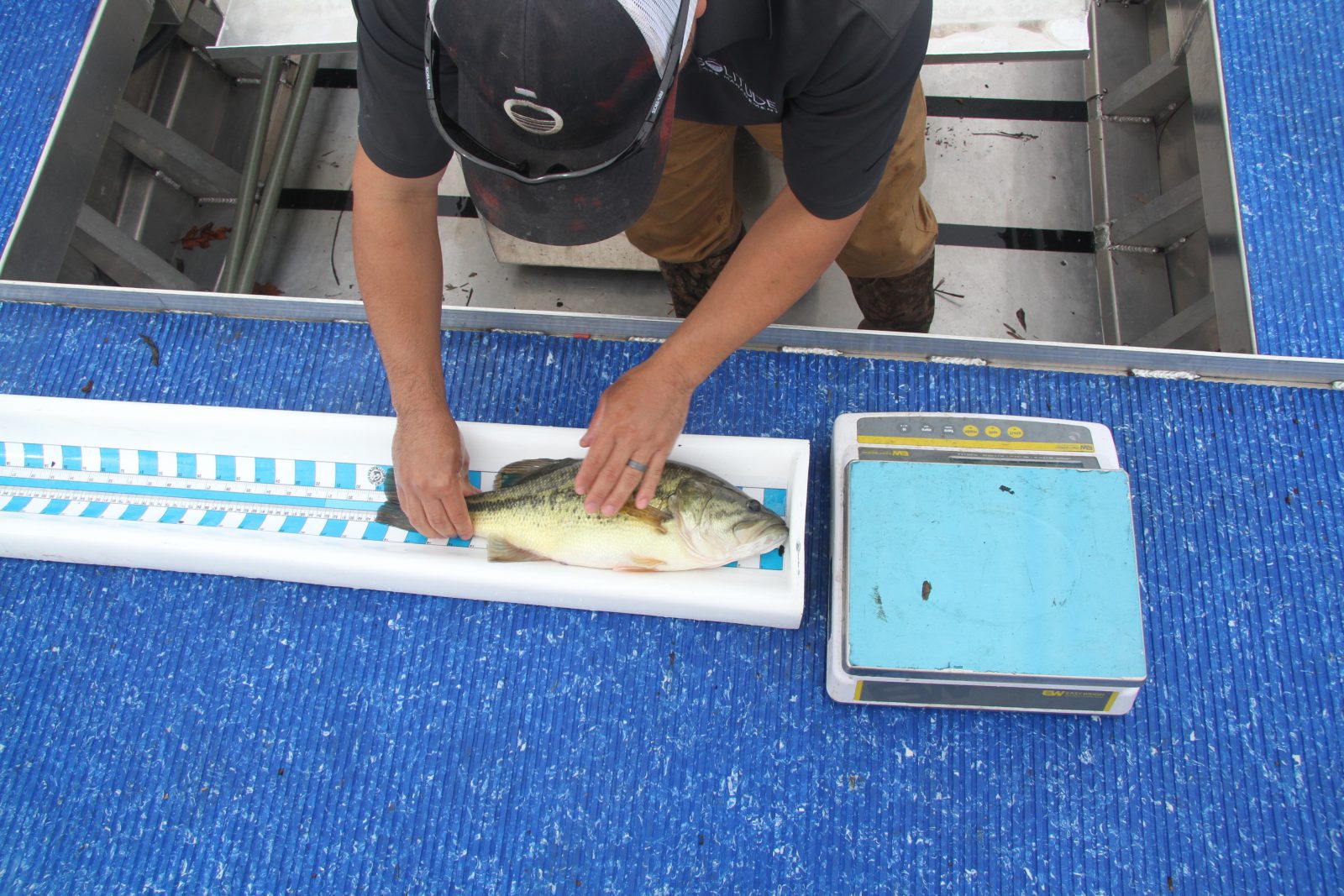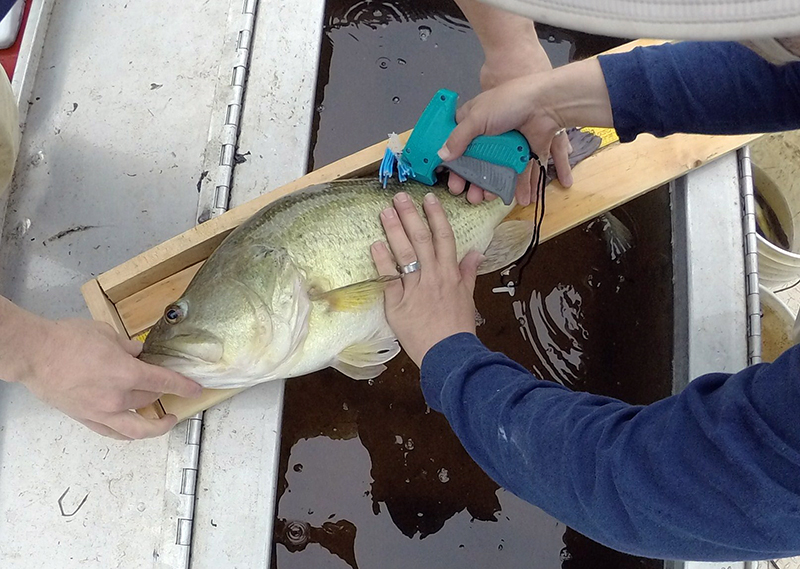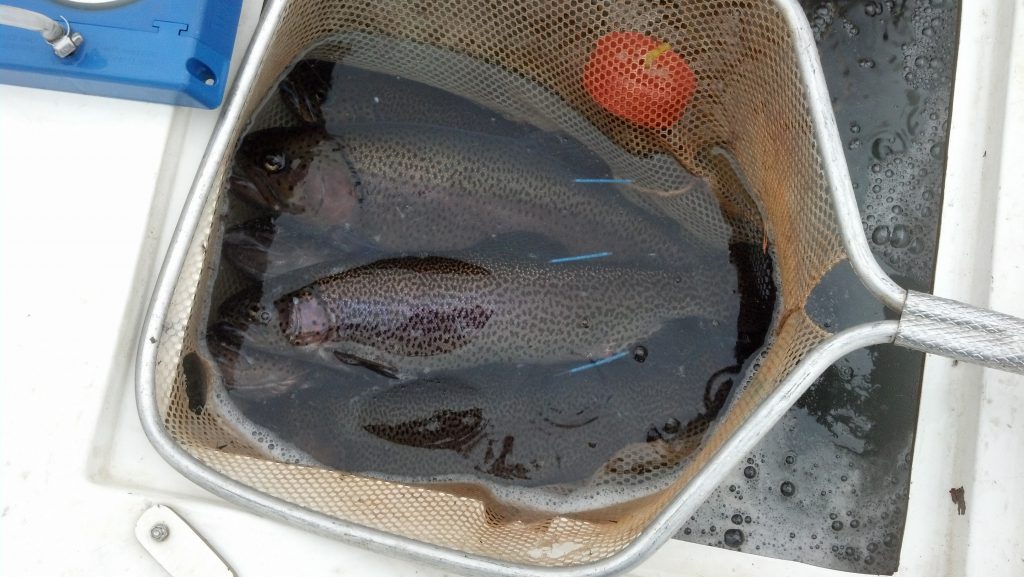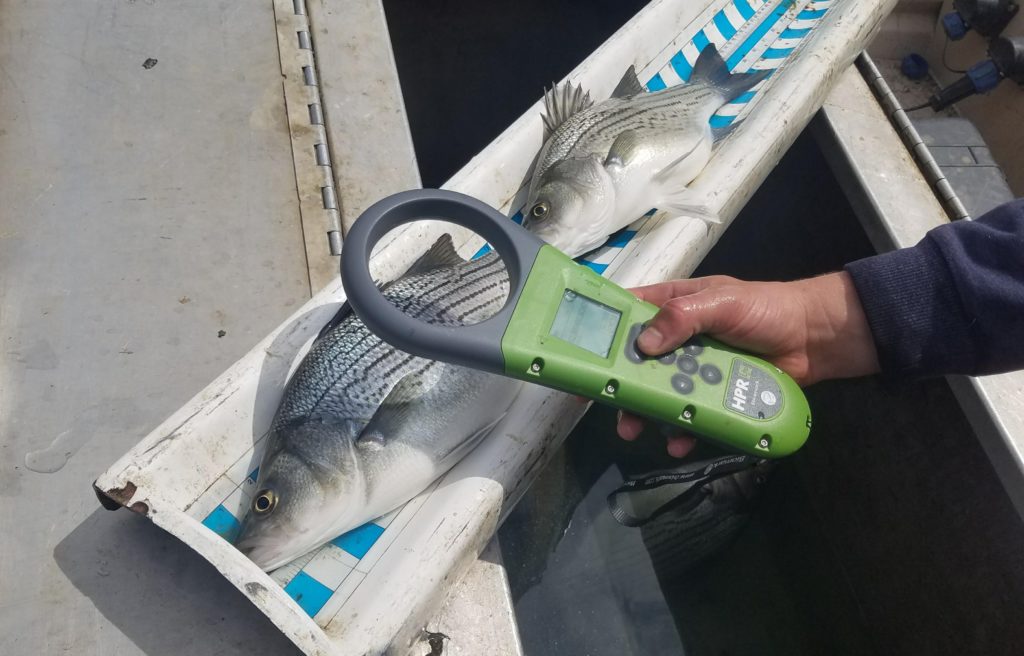

Fisheries Management Strategies: Fish Tagging
Ever wonder how many largemouth bass are in your pond? Ever stock your pond with predators like largemouth bass, hybrid stripers, or tiger muskie, and wonder how fast they are growing? What about how long they might live? This kind of data is very valuable to fisheries biologists when making important management decisions regarding your fishery. All of these questions can be answered by marking or tagging fish with a unique identification number and releasing them back into your pond.
The process of tagging a fish, putting it in your pond, and recollecting (or catching it) is called mark-release-recapture. When a marked fish is recaptured (or not recaptured), the data collected can provide population estimates, fish growth over the elapsed time period, and mortality rate estimates. A key thing to understand when tagging fish is that the process of tagging and the tag itself should not influence the fish’s behavior or increase its chances of dying from handling or predators. Also, there is a chance the tag can be lost or come out of the fish. When analyzing the data, fisheries biologists have methods to account for any lost tags.

The two most common types of tags used in pond management to identify individual fish are Floy (or anchor) tags, and Passive Integrated Transponder (PIT) tags. Both work extremely well and in each situation have their advantages and disadvantages. The one that is right for you is based on your goals as a pond owner.
Anchor tags are small (2 inches) pieces of nylon tubing “anchored” to the back of a fish with a T-like end. This tag is similar to the type of tag that attaches a price label to a piece of clothing. The big advantage of an anchor tag is that it CAN be seen outside the body of a fish. If you fish your pond and would like to keep track of certain fish, these tags will work well. Anchor tags are a great hands-on option for marking your fish and after some simple initial training by a fisheries biologist, can be applied by any private pond owner.

PIT tags transmit a unique ID number and must be read by a separate magnetic reader. These are similar to tags used by veterinarians to return dogs and cats back home if they are ever lost and found. They are very small, about the length of a dime. They have no internal battery, are “passive” and are only activated by a magnetic reader. The big advantage with PIT tags is that they CANNOT be seen outside the body of the fish. So if you do not want to see tags on your fish if caught while fishing, you will have no idea the fish has even been tagged. PIT tags must be placed in the fish by a trained fisheries biologist.
If you are looking to assess or improve your fishery, tagging your predator fish is a great and inexpensive way to gather the data needed to make well-educated future fisheries management decisions.
SOLitude Lake Management is a nationwide environmental firm committed to providing sustainable solutions that improve water quality, enhance beauty, preserve natural resources and reduce our environmental footprint. SOLitude’s team of aquatic resource management professionals specializes in the development and execution of customized lake, pond, wetland and fisheries management programs that include water quality testing and restoration, nutrient remediation, algae and aquatic weed control, installation and maintenance of fountains and aeration systems, bathymetry, mechanical harvesting and hydro-raking, lake vegetation studies, biological assessments, habitat evaluations, and invasive species management. Services and educational resources are available to clients nationwide, including homeowners associations, multi-family and apartment communities, golf courses, commercial developments, ranches, private landowners, reservoirs, recreational and public lakes, municipalities, drinking water authorities, parks, and state and federal agencies. SOLitude Lake Management is a proud member of the Rentokil Steritech family of companies in North America.









